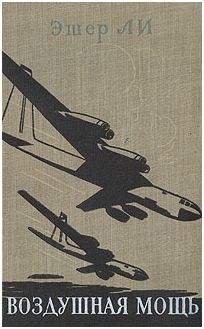Франс де Вааль - Достаточно ли мы умны, чтобы судить об уме животных?
Herculano-Houzel, S., et al. 2014. The elephant brain in numbers. Neuroanatomy 8:10.3389 / fnana.2014.00046.
Herrmann, E., et al. 2007. Humans have evolved specialized skills of social cognition: The cultural intelligence hypothesis. Science 317:1360–66.
Herrmann, E., V. Wobber, and J. Call. 2008. Great apes' (Pan troglodytes, P. paniscus, Gorilla gorilla, Pongo pygmaeus) understanding of tool functional properties after limited experience. Journal of Comparative Psychology 122:220–30.
Heyes, C. 1995. Self-recognition in mirrors: Further ref lections create a hall of mirrors. Animal Behaviour 50: 1533–42.
Hillemann, F., T. Bugnyar, K. Kotrschal, and C. A. F. Wascher. 2014. Waiting for better, not for more: Corvids respond to quality in two delay maintenance tasks. Animal Behaviour 90: 1–10.
Hirata, S., K. Watanabe, and M. Kawai. 2001. "Sweet-potato washing" revisited. In Primate Origins of Human Cognition and Behavior, ed. T. Matsuzawa, 487–508. Tokyo: Springer.
Hobaiter, C., and R. Byrne. 2014. The meanings of chimpanzee gestures. Current Biology 24:1596–600.
Hodos, W., and C. B. G. Campbell. 1969. Scala naturae: Why there is no theory in comparative psychology. Psychological Review 76:337–50.
Hopper, L. M., S. P. Lambeth, S. J. Schapiro, and A. Whiten. 2008. Observational learning in chimpanzees and children studied through "ghost" conditions. Proceedings of the Royal Society of London B 275:835–40.
Horner, V., et al. 2010. Prestige affects cultural learning in chimpanzees. Plos ONE 5: e10625.
Horner, V., D. J. Carter, M. Suchak, and F. B. M. de Waal. 2011. Spontaneous prosocial choice by chimpanzees. Proceedings of the Academy of Sciences, USA 108:13847–51.
Horner, V., and F. B. M. de Waal. 2009. Controlled studies of chimpanzee cultural transmission. Progress in Brain Research 178:3–15.
Horner, V., A. Whiten, E. Flynn, and F. B. M. de Waal. 2006. Faithful replication of foraging techniques along cultural transmission chains by chimpanzees and children. Proceedings of the National Academy of Sciences USA 103:13878–83.
Horowitz, A. 2010. Inside of a Dog: What Dogs See, Smell, and Know. New York: Scribner.
Hostetter, A. B., M. Cantero, and W. D. Hopkins. 2001. Differential use of vocal and gestural communication by chimpanzees (Pan troglodytes) in response to the attentional status of a human (Homo sapiens). Journal of Comparative Psychology 115:337–43.
Howell, T. J., S. Toukhsati, R. Conduit, and P. Bennett. 2013. The perceptions of dog intelligence and cognitive skills (PoDIaCS) survey. Journal of Veterinary Behavior: Clinical Applications and Research 8:418–24.
Huffman, M. A. 1996. Acquisition of innovative cultural behaviors in nonhuman primates: A case study of stone handling, a socially transmitted behavior in Japanese macaques. In Social Learning in Animals: The Roots of Culture, ed. C. M. Heyes and B. Galef, 267–89. San Diego: Academic Press.
Hume, D. 1985 [orig. 1739]. A Treatise of Human Nature. Harmondsworth, UK: Penguin.
Hunt, G. R. 1996. The manufacture and use of hook tools by New Caledonian crows. Nature 379:249–51.
Hunt, G. R., et al. 2007. Innovative pandanus-folding by New Caledonian crows. Australian Journal of Zoology 55:291–98.
Hunt, G. R., and R. D. Gray. 2004. The crafting of hook tools by wild New
Caledonian crows. Proceedings of the Royal Society of London B 271: S88 – S90. Hurley, S., and M. Nudds. 2006. Rational Animals? Oxford: Oxford University Press.
Imanishi, K. Man. 1952. Tokyo: Mainichi-Shinbunsha.
Inman, A., and S. J. Shettleworth. 1999. Detecting metamemory in nonverbal subjects: A test with pigeons. Journal of Experimental Psychology: Animal Behavior Processes 25:389–95.
Inoue, S., and T. Matsuzawa. 2007. Working memory of numerals in chimpanzees. Current Biology 17: R1004 – R1005.
Inoue-Nakamura, N., and T. Matsuzawa. 1997. Development of stone tool use by wild chimpanzees. Journal of Comparative Psychology 111:159–73.
Itani, J., and A. Nishimura. 1973. The study of infrahuman culture in Japan: A review. In Precultural Primate Behavior, ed. E. Menzel, 26–50. Basel: Karger.
Jabr, F. 2014. The science is in: Elephants are even smarter than we realized. Scientific American, Feb. 26.
Jackson, R. R. 1992. Eight-legged tricksters. Bioscience 42:590–98.
Jacobs, L. F., and E. R. Liman. 1991. Grey squirrels remember the locations of buried nuts. Animal Behaviour 41:103–10.
Janik, V. M., L. S. Sayigh, and R. S. Wells. 2006. Signature whistle contour shape conveys identity information to bottlenose dolphins. Proceedings of the National Academy of Sciences USA 103:8293–97.
Janmaat, K. R. L., L. Polansky, S. D. Ban, and C. Boesch. 2014. Wild chimpanzees plan their breakfast time, type, and location. Proceedings of the National Academy of Sciences USA 111:16343–48.
Jelbert, S. A., et al. 2014. Using the Aesop's fable paradigm to investigate causal understanding of water displacement by New Caledonian crows. Plos ONE 9: e92895.
Jorgensen, M. J., S. J. Suomi, and W. D. Hopkins. 1995. Using a computerized testing system to investigate the preconceptual self in nonhuman primates and humans. In The Self in Infancy: Theory and Research, ed. P. Rochat, 243–256. Amsterdam: Elsevier.
Judge, P. G. 1991. Dyadic and triadic reconciliation in pigtail macaques (Macaca nemestrina). American Journal of Primatology 23:225–37.
Judge, P. G., and S. H. Mullen. 2005. Quadratic postconf lict affiliation among bystanders in a hamadryas baboon group. Animal Behaviour 69:1345–55.
Kagan, J. 2000. Human morality is distinctive. Journal of Consciousness Studies 7:46–48.
–. 2004. The uniquely human in human nature. Daedalus 133:77–88.
Kaminski, J., J. Call, and J. Fischer. 2004. Word learning in a domestic dog: evidence for fast mapping. Science 304:1682–83.
Kendal, R., et al. 2015. Chimpanzees copy dominant and knowledgeable individuals: Implications for cultural diversity. Evolution and Human Behavior 36:65–72.
Kinani, J.-F., and D. Zimmerman. 2015. Tool use for food acquisition in a wild mountain gorilla (Gorilla beringei beringei). American Journal of Primatology 77:353–57.
King, S. L., and V. M. Janik. 2013. Bottlenose dolphins can use learned vocal labels to address each other. Proceedings of the National Academy of Sciences USA 110: 13216–21.
King, S. L., et al. 2013. Vocal copying of individually distinctive signature whistles in bottlenose dolphins. Proceedings of the Royal Society B 280: 20130053.
Kitcher, P. 2006. Ethics and evolution: How to get here from there. In Primates and Philosophers: How Morality Evolved, ed. S. Macedo and J. Ober, 120–39. Princeton, NJ: Princeton University Press.
Koepke, A. E., S. L. Gray, and I. M. Pepperberg. 2015. Delayed gratification: A grey parrot (Psittacus erithacus) will wait for a better reward. Journal of Comparative Psychology. In press.
Köhler, W. 1925. The Mentality of Apes. New York: Vintage.
Koyama, N. F. 2001. The long-term effects of reconciliation in Japanese macaques (Macaca fuscata). Ethology 107:975–87.
Koyama, N. F., C. Caws, and F. Aureli. 2006. Interchange of grooming and agonistic support in chimpanzees. International Journal of Primatology 27:1293–309.
Kruuk, H. 2003. Niko's Nature: The Life of Niko Tinbergen and His Science of Animal Behaviour. Oxford: Oxford University Press.
Kummer, H. 1971. Primate Societies: Group Techniques of Ecological Adaptions. Chicago: Aldine.
–. 1995. In Quest of the Sacred Baboon: A Scientist's Journey. Princeton, NJ: Princeton University Press.
Kummer, H., V. Dasser, and P. Hoyningen-Huene. 1990. Exploring primate social cognition: Some critical remarks. Behaviour 112:84–98.
Kuroshima, H., et al. 2003. A capuchin monkey recognizes when people do and do not know the location of food. Animal Cognition 6:283–91.
Ladygina-Kohts, N. 2002 [orig. 1935]. Infant Chimpanzee and Human Child: A Classic 1935 Comparative Study of Ape Emotions and Intelligence, ed. F. B. M. de Waal. Oxford: Oxford University Press.
Langergraber, K. E., J. C. Mitani, and L. Vigilant. 2007. The limited impact of kinship on cooperation in wild chimpanzees. Proceedings of the Academy of Sciences USA 104:7786–90.
Lanner, R. M. 1996. Made for Each Other: A Symbiosis of Birds and Pines. New York: Oxford University Press.
Leavens, D. A., F. Aureli, W. D. Hopkins, and C. W. Hyatt. 2001. Effects of cognitive challenge on self-directed behaviors by chimpanzees (Pan troglodytes). American Journal of Primatology 55:1–14.
Leavens, D., W. D. Hopkins, and K. A. Bard. 1996. Indexical and referential pointing in chimpanzees (Pan troglodytes). Journal of Comparative Psychology 110 (1996): 346–53.
Lehrman, D. 1953. A critique of Konrad Lorenz's theory of instinctive behavior. Quarterly Review of Biology 28:337–63.
Lethmate, J. 1982. Tool-using skills of orangutans. Journal of Human Evolution 11:49–50.
Lethmate, J., and G. Dücker. 1973. Untersuchungen zum Selbsterkennen im Spiegel bei Orang-Utans und einigen anderen Affenarten. Zeitschrift für Tierpsychologie 33:248–69.
Liebal, K., B. M. Waller, A. M. Burrows, and K. E. Slocombe. 2013. Primate Communication: A Multimodal Approach. Cambridge: Cambridge University Press.
Limongelli, L., S. Boysen, and E. Visalberghi. 1995. Comprehension of cause effect relations in a tool-using task by chimpanzees (Pan troglodytes). Journal of Comparative Psychology 109:18–26.
Lindauer, M. 1987. Introduction. In Neurobiology and Behavior of Honeybees, ed. R. Menzel and A. Mercer, 1–6. Berlin: Springer.
Lonsdorf, E. V., L. E. Eberly, and A. E. Pusey. 2004. Sex differences in learning in chimpanzees. Nature 428:715–16.
Lorenz, K. Z. 1941. Vergleichende Bewegungsstudien an Anatinen. Journal für Ornithologie 89 (1941): 194–294.
–. 1952. King Solomon's Ring. London: Methuen, 1952.
–. 1981. The Foundations of Ethology. New York: Simon and Schuster. Malcolm, N. 1973. Thoughtless brutes. Proceedings and Addresses of the American Philosophical Association 46:5–20.
Marais, E. 1969. The Soul of the Ape. New York: Atheneum.
Marks, J. 2002. What It Means to Be 98 % Chimpanzee: Apes, People, and Their Genes. Berkeley: University of California Press.
Martin, C. F., et al. 2014. Chimpanzee choice rates in competitive games match equilibrium game theory predictions. Scientfic Reports 4:5182.
Martin-Ordas, G., D. Berntsen, and J. Call. 2013. Memory for distant past events in chimpanzees and orangutans. Current Biology 23:1438–41.
Martin-Ordas, G., J. Call, and F. Colmenares. 2008. Tubes, tables and traps: Great apes solve two functionally equivalent trap tasks but show no evidence of transfer across tasks. Animal Cognition 11:423–30.
Marzluff, J. M., et al. 2010. Lasting recognition of threatening people by wild American crows. Animal Behaviour 79:699–707.
Marzluff, J. M., and T. Angell. 2005. In the Company of Crows and Ravens. New Haven, CT: Yale University Press.
Marzluff, J. M., R. Miyaoka, S. Minoshima, and D. J. Cross. 2012. Brain imaging reveals neuronal circuitry underlying the crow's perception of human faces. Proceedings of the National Academy of Sciences USA 109:15912–17.
Mason, W. A. 1976. Environmental models and mental modes: Representational processes in the great apes and man. American Psychologist 31:284–94.
Massen, J. J. M., A. Pašukonis, J. Schmidt, and T. Bugnyar. 2014. Ravens notice dominance reversals among conspecifics within and outside their social group. Nature Communications 5:3679.
Massen, J. J. M., G. Szipl, M. Spreafico, and T. Bugnyar. 2014. Ravens intervene in others' bonding attempts. Current Biology 24:2733–36.
Mather, J. A., and R. C. Anderson. 1999. Exploration, play, and habituation in octopuses (Octopus dof leini). Journal of Comparative Psychology 113:333–38. Mather, J. A., R. C. Anderson, and J. B. Wood. 2010. Octopus: The Ocean's Intelligent Invertebrate. Portland, OR: Timber Press.
Matsuzawa, T. 1994. Field experiments on use of stone tools by chimpanzees in the wild. In Chimpanzee Cultures, ed. R. W. Wrangham, W. C. McGrew, F. B. M. de Waal, and P. Heltne, 351–70. Cambridge, MA: Harvard University Press.
–. 2009. Symbolic representation of number in chimpanzees. Current Opinion in Neurobiology 19:92–98.
Matsuzawa, T., et al. 2001. Emergence of culture in wild chimpanzees: education by master-apprenticeship. In Primate Origins of Human Cognition and Behavior, ed. T. Matsuzawa, 557–74. New York: Springer.
Mayr, E. 1982. The Growth of Biological Thought. Cambridge, MA: Harvard University Press.
McComb, K., et al. 2011. Leadership in elephants: The adaptive value of age. Proceedings of the Royal Society B 274:2943–49.
McComb, K., G. Shannon, K. N. Sayialel, and C. Moss. 2014. Elephants can determine ethnicity, gender and age from acoustic cues in human voices. Proceedings of the National Academy of Sciences USA 111:5433–38.
McGrew, W. C. 2010. Chimpanzee technology. Science 328:579–80.
–. 2013. Is primate tool use special? Chimpanzee and New Caledonian crow compared. Philosophical Transactions of the Royal Society B 368:20120422. McGrew, W. C., and C. E. G. Tutin. 1978. Evidence for a social custom in wild chimpanzees? Man 13:243–51.
Melis, A. P., B. Hare, and M. Tomasello. 2006a. Chimpanzees recruit the best collaborators. Science 311:1297–300.




